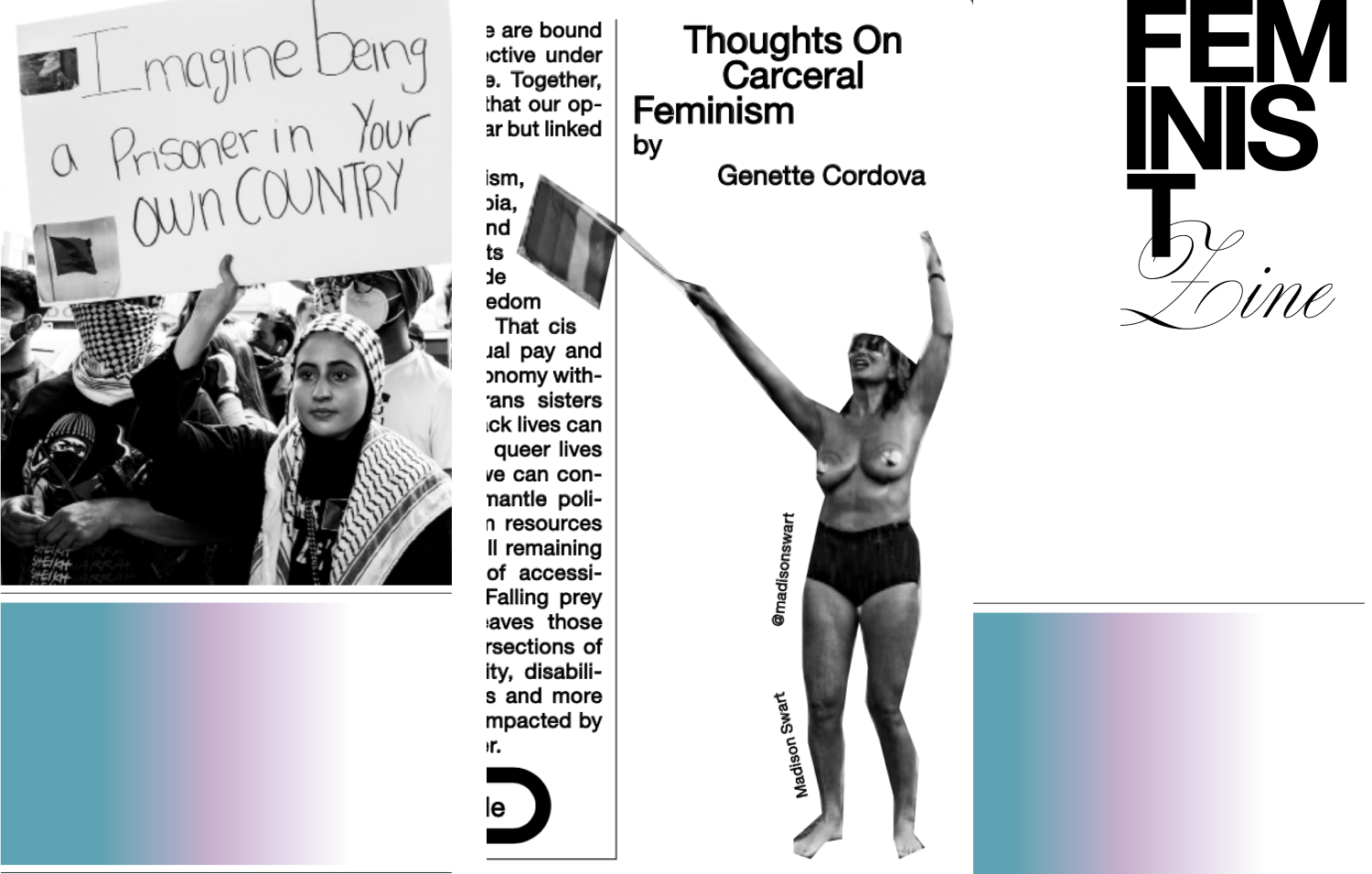THOUGHTS ON CARCERAL FEMINISM
by Gennette Cordova
Read this in the FEMINIST ZINE
At times, being a feminist and an abolitionist can feel like refereeing warring identities. A strain exists between the desire to have a hammer brought down on perpetrators of gender-based violence (GBV) and the knowledge that the state, as it historically and currently functions, will never provide effective, healing solutions to violence against women.
Over a century's worth of incessant copaganda in our society has embedded in our nation’s collective psyche, an idea of police as our first line of defense against crime and violence. As a result, the knee jerk reaction by feminist groups to look to police and the state to address GBV is a natural and expected impulse. When the Violence Against Women Act (VAWA) passed, as a portion of Clinton’s 1994 Crime Bill, the landmark legislation was seen, and is still considered by many, as a win for women. However, the legislation furthered carceral feminism’s instinct and ability to center law enforcement in its activism with little to no regard for the harmful effects, including the negative consequences for women and survivors alike.
At its core, VAWA functions to expand mass incarceration and contribute to state violence. Intent aside, it is reckless to champion policy solutions and funding opportunities, for any issue, without factoring in their potential to fortify a deeply violent, racist and ineffective system. More to the point, a system that specifically allows for the exploitation and oppression of women, particularly poor women, can never be a tool to fix the complex issue of GBV. A phenomenon known as the “sexual abuse to prison pipeline” references the empirical evidence that reveals that not only are many girls who experience sexual abuse routed into the juvenile justice system as a result of their victimization, but also that sexual abuse is one of the primary predictors of girls’ entry into correctional facilities.
Before being co-opted by state-friendly (and state dollar hungry) organizations and efforts, the early anti-rape movement of the 1970’s shunned law enforcement as a centerpiece of their community and coalition-based approach. It’s time to revisit the spirit of that movement. Unfortunately, we’re still in a place where abolition is considered extreme, and often it feels as though mainstream feminists believe there are few things more righteous than putting a rapist in jail.
Violence in our homes and communities is an agonizing reality for women. The UN characterizes GBV as one of the most prevalent human rights violations in the world. But more consideration should be given to the ways in which prisons mirror the GBV women experience in their personal lives, heightened at the intersection of racism and patriarchy, with the added layer of state violence. How can we rely on environments that encourage the rampant sexual assault of incarcerated women (and men, at alarming rates!) by police and prison guards to assist in our quest for justice, restoration and harm reduction? Survivor advocates will tell you that having to deal with police and courts is actually a major contributing factor to the lack of reporting surrounding rape and IPV (intimate partner violence). This is especially harmful as society has normalized invalidating the experience of victims if they’re unwilling to pursue state-sponsored punishment of their abusers.
I sympathize with those who feel conflicted about abolition. I, personally, fantasize about street justice being enacted against rapists and abusers. Still, we must make a conscious effort to lean away from our thirst for retribution, and progress toward solutions that resolve rather than inflame these issues. The rage we feel at the patriarchal violence that exploits the unequal power dynamic between genders cannot lead us to hastily and desperately embrace the oppressive apparatuses that we’re told are our only avenues for protection and justice. I implore those who are in the early stages of unlearning a punitive mindset to be wary of solutions that sound good in theory, but ultimately legitimize and strengthen the carceral state that both regularly creates new victims of sexual abuse and further victimizes survivors of sexual abuse.



